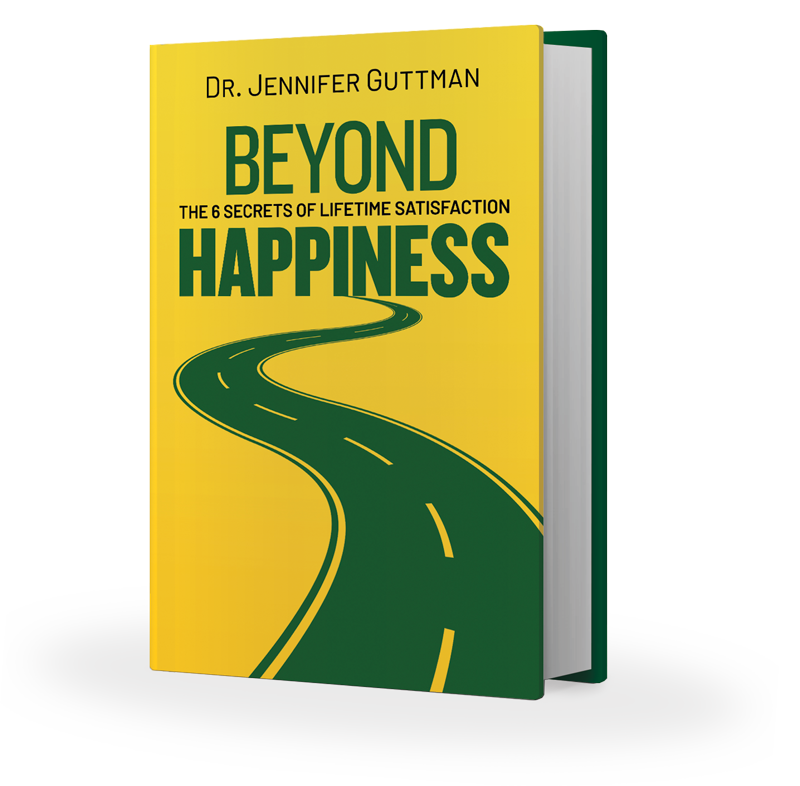A friendly, practiced approach to not only surviving life’s pitfalls but to thriving with a sustainable level of contentment.
People seek me out when things aren’t going well in their lives. Their circumstances may vary, but be they artist or executive, high school student or overwhelmed parent, struggling college graduate or retiree, most of them ask me, “Shouldn’t I be happy?”
Maybe you can relate? I certainly can.
There was one particularly rough-yet-transformational time when my life’s path veered and twisted in unexpected ways. It’s when I realized I was looking for the wrong thing—happiness—and that there was something far more important and ultimately sustainable.
My journey began when I was the only one who could see that my infant son was seriously ill.
From the time my son, Steven, was six months old, he had suffered from a chronic cough and difficulty swallowing his food. Despite my certainty that there was something medically wrong with him, I was consistently turned away by medical professionals, who ascribed his symptoms to asthma, acid reflux, and, eventually, a “psychological” cough.
After an almost nine-year cycle of research and disappointment, I located a children’s hospital in Colorado that agreed to look into his case, and we packed our bags and flew there from our home in Westchester County, New York. After a CAT scan, the doctor there saw what all the others had ignored. It was not asthma. Not reflux. Not a psychological cough. And not the imaginings of a hysterical first-time mother. In fact, Steven had something called a double aortic arch. It’s a rare condition, almost always diagnosed before the age of three before permanent damage develops.
From Colorado, we flew to Boston, where a pediatric cardiac surgeon performed open-heart surgery on my nine-year-old child, cutting and clamping one of his aortas to free up his trachea and esophagus.
Besides enduring the ravages to his body, Steven had lost the invincibility and innocence of youth during those years. However, together we learned something about ourselves and each other. We discovered we could spring back from adversity, we could persist and remain positive and hopeful in the face of seemingly insurmountable challenges, and we were united by a bond that made us better able to confront future problems with that same life satisfaction and resilience. We’d discovered something beyond happiness.
But before I could think this through, things in my life got worse.
At a family party to celebrate Steven’s eleventh birthday, I began to feel short of breath. My shortness of breath turned into terrible chest pain and increasing difficulty breathing.
A CAT scan revealed multiple pulmonary embolisms. Miraculously, it was the pain that had saved my life. After a week of medical observation and blood thinners, I was released from the hospital.
It’s inevitable—life will throw us curveballs, sometimes several at a time. Before I’d made much progress pushing forward, my father passed away. I was blindsided once again. Years of facing Steven’s frightening-yet-nameless illness, open-heart surgery on a nine-year-old, my near-death experience, and now this—it was such a concentration of uncertainty, fear, and sorrow in a very short period of time.
After my father’s funeral, I made a decision to take three weeks off from work—an unprecedented amount of time for me.
I needed the brain space to figure out how to regain my sense of purpose, optimism, and hope. I began to explore the factors that had glued me together and helped me move forward even in the worst of times. If I could map those out, I could share my strategy.
That’s how Sustainable Life Satisfaction was conceived.
I realized there was a through line of techniques that had carried me across all the traumatic events of the past years. As I thought about all I’d gone through, I noticed some patterns. I had consistently done six things:
1. I avoided assumptions.
2. I reduced people-pleasing behavior.
3. I faced my fears.
4. I made decisions.
5. I followed through and became a closer.
6. I actively self-reinforced.
Here’s how it worked in my life:
I avoided assumptions about what was wrong with Steven based solely on doctors’ incomplete opinions about the cause of his illness. Likewise, I didn’t assume that if I had been gravely ill once with pulmonary embolisms, I should consider myself fragile and proceed with more caution in life than I authentically felt was necessary.
I reduced people-pleasing behavior by never accepting the doctors’ assumptions about Steven’s health. By not people pleasing, I kept myself from becoming complacent and didn’t allow others to reduce my advocacy or negatively affect my tenacity.
Next…I faced my fears. If you’ve ever had a chronically ill child, you know how terrifying it can be. For years, I’d wake up every morning and face my dread of the unknown. By refusing to believe the doctors’ diagnoses, I forced myself to find the truth.
Then…I made decisions and committed to them. Should I accept a diagnosis that doesn’t make sense? Which doctor should I take Steven to next—a gastroenterologist or a pulmonologist? Should I send him to sleepaway camp or not? Is it worthwhile to travel all the way to Colorado? Each step of the way, I had to make decisions.
And as I did…I followed through and became a closer. I didn’t stop until I had answers, until I’d securely closed the door on this hard chapter in our lives. I can’t tell you how many times I promised Steven, “I’m going to knock down every door until we have a resolution.”
Throughout the entire process, I actively self-reinforced. I took care of myself even when the path with Steven was hard. Sometimes, this meant a good cry in the shower; sometimes, it meant going to see a movie or play to get out of my head for a few hours. I self-reinforced after my father passed away by giving myself permission to take care of my needs by leaving for a few weeks to grieve.
As I began to teach these skills to my clients, I saw something incredible happen over and over again! As people consistently applied my Sustainable Life Satisfaction techniques, they were not only becoming more satisfied and resilient, but they were also realizing that happiness isn’t the goal—it’s a feeling.
My wish for you is that the path of Sustainable Life Satisfaction will be your road map to your best opportunities, to your life of defiant resilience: beyond happiness.

Excerpted from Beyond Happiness: The 6 Secrets of Lifetime Satisfaction (c) 2023 by Dr. Jennifer Guttman. Published by Post Hill Press. Used with permission.
